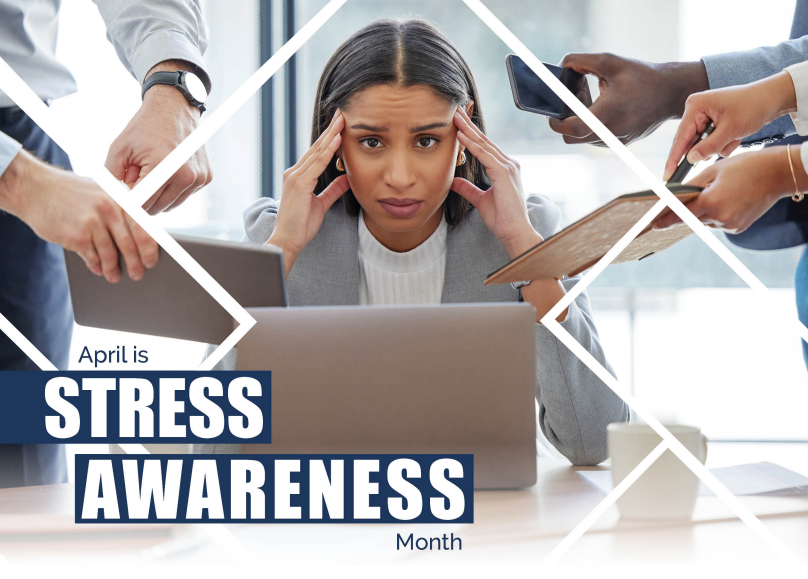
Stress relievers can help bring calm and peace to a busy life. It is not necessary to spend hours on complicated techniques, sometimes small changes can make a significant difference. Stress, if left unchecked, can lead to physical and mental health, affecting everything from mood to the immune system. By adopting healthy habits, stress can be managed more effectively, leading to an improvement in overall well-being. If stress is overwhelming, consider these simple and effective techniques to find relief.
Get Active
Physical activity is a powerful stress reliever. A person does not need to be an athlete, any movement can be beneficial. Exercise stimulates endorphins, the body’s natural mood boosters, and can shift focus away from stress. Regular physical activity also promotes better sleep, improves self-confidence, and reduces anxiety levels. Participating in physical activity encourages the brain to release neurotransmitters that promote relaxation and a sense of accomplishment.
Here are some simple ways to get moving:
- Take a brisk walk or jog
- Dance to a favorite song
- Try gardening or housecleaning
- Practice yoga or stretching exercises
The key is to find fun activities so that movement becomes a vital part of a routine.
Eat a Healthy Diet
Food choices play a fundamental role in how one feels. A well-balanced diet helps the body to manage stress more effectively. Nutrient-rich foods can reduce mood and energy levels, while processed and sugary foods may increase irritability and fatigue. Nourishing the body creates a stronger foundation to fight the physical effects of stress.
Tips for a stress-reducing diet:
- Eat plenty of fruits, vegetables, and whole grains
- Limit caffeine and sugar intake
- Stay hydrated throughout the day
Consuming foods that contain omega-3 fatty acids, such as salmon and walnuts, may reduce stress hormones. Small changes in the diet can have an extreme effect on mental clarity and emotional balance.
Avoid Unhealthy Habits
It is common to turn to unhealthy coping mechanisms when feeling stressed. However, habits such as smoking, excessive alcohol consumption, or overeating can result in a decrease in stress. While these behaviors may provide temporary relief, they can lead to major health issues and increased anxiety in the long run.
Instead, positive strategies can be more effective, such as taking a walk, calling a friend, or practicing deep breathing exercises. By replacing negative habits with healthier options, individuals can adopt long-term resilience and well-being.
Laugh More
Laughter provides both physical and mental health benefits. A good laugh can lighten the mental load and cause physical changes that ease stress. It triggers the release of endorphins and can reduce physical tension in the body, leaving muscles relaxed for up to 45 minutes.
Finding ways to add humor to your day can notably improve your overall well-being. Watching a funny movie or TV show, sharing jokes with friends, or exploring laughter yoga and humor podcasts are simple ways to encourage more laughter in your life. Incorporating humor into daily routines not only offers a refreshing mental break but also creates stronger social bonds with others. Taking time to laugh can make everyday challenges feel a little lighter and more manageable.
Connect with Others
Social connections are a natural buffer against stress. Talking to someone who listens and cares can provide relief and perspective. Whether through family, friends, or support groups, important interactions can validate feelings and reduce the sense of isolation.
Maintaining relationships can enhance emotional support networks and improve an individual’s ability to handle life’s challenges. Simple actions like scheduling regular check-ins with loved ones, joining a community group, or volunteering can foster these connections. Reaching out for support when needed is not a sign of weakness but a powerful step toward emotional well-being. Positive social interactions also stimulate the release of oxytocin, a hormone that promotes feelings of trust and bonding. Strengthening these relationships not only improves stress but also helps to build a resilient and supportive environment.
Get Enough Sleep
Quality sleep is vital for stress management. Aim for 7-9 hours of restful sleep each night to recharge the body and mind. Sleep deprivation can increase irritability, impair cognitive function, and weaken the immune system.
Prioritizing restful sleep enhances emotional strength and enhances the ability to cope with stress effectively. Creating a calming bedtime routine, such as limiting screen time before bed and maintaining a cool, dark sleep environment, can improve sleep quality. Avoiding caffeine and heavy meals before bed also supports better rest. When you are well rested, you are better equipped to handle whatever life is going on.
Express Yourself Through Journaling
Journaling can be a therapeutic way to release tension and gain clarity. Writing down thoughts allows for self-reflection and helps identify stress triggers. Regular journaling can track patterns and promote the development of healthier coping strategies.
Whether writing a few sentences or several pages, this practice provides a personal space to process emotions and explore solutions to challenges.
Engage in Creative Outlets
Creative activities provide an enjoyable escape from daily pressures. Engaging in creative expression allows individuals to process emotions in a nonverbal way while fostering a sense of accomplishment.
Ideas for creative stress relief:
- Play a musical instrument or listen to soothing tunes
- Sketch, paint, or try crafting
- Explore new hobbies that spark joy
Creative outlets not only offer relaxation but also enhance mental flexibility and problem-solving skills.
Seek Professional Support
When stress becomes overwhelming, seeking professional assistance can be a crucial decision. Mental health professionals can provide effective tools and guidance to navigate life’s challenges. Therapy offers a safe space to explore thoughts and feelings while learning practical coping strategies.
Therapists use evidence-based techniques to assist in managing stress and fostering resilience. Seeking support is a proactive approach to improving mental and emotional well-being.
Stress is a part of life, but with the right habits, it can be managed effectively. Start small by choosing one or two strategies from this list and incorporating them into a daily routine. By prioritizing well-being, individuals empower themselves to handle life’s challenges with greater ease. Improved mental and physical health is achievable through consistent, mindful practices.
References:
American Psychological Association. (2023). Stress effects on the body. https://www.apa.org/topics/stress/body
Centers for Disease Control and Prevention. (2022). Tips for better sleep. https://www.cdc.gov/sleep/about_sleep/sleep_hygiene.html
Mayo Clinic (2022). Exercise and stress: Get moving to manage stress. https://www.health.harvard.edu/staying-healthy/exercise-and-stress
Mayo Clinic. (2023). Stress relief from laughter? It’s no joke. https://www.mayoclinic.org/healthy-lifestyle/stress-management/in-depth/stress-relief/art-20044456
Seaward, B. L. (2021). Managing stress: Principles and strategies for health and well-being (10th ed.). Jones & Bartlett Learning.









 Stress is a natural part of life, and the human body is designed to respond to it. Whether preparing for a major test, meeting a work deadline, or facing unexpected challenges, stress can help maintain alertness, motivation, and readiness for action. However, when stress becomes persistent without periods of relaxation, it can take a toll on both physical and mental health.
Stress is a natural part of life, and the human body is designed to respond to it. Whether preparing for a major test, meeting a work deadline, or facing unexpected challenges, stress can help maintain alertness, motivation, and readiness for action. However, when stress becomes persistent without periods of relaxation, it can take a toll on both physical and mental health.
 Mindfulness is a type of meditation in which you focus on being intensely aware of what you’re sensing and feeling in the moment, without interpretation or judgment. Practicing mindfulness involves breathing methods, guided imagery, and other practices to relax the body and mind and help reduce stress.
Mindfulness is a type of meditation in which you focus on being intensely aware of what you’re sensing and feeling in the moment, without interpretation or judgment. Practicing mindfulness involves breathing methods, guided imagery, and other practices to relax the body and mind and help reduce stress.
 Journaling typically involves the regular practice of maintaining a diary or journal to delve into thoughts and emotions surrounding life events. There are various approaches to this practice. While consistent journaling proves most effective for stress management and self-exploration, even occasional, sporadic entries can provide stress relief, particularly when focused on gratitude or emotional processing.
Journaling typically involves the regular practice of maintaining a diary or journal to delve into thoughts and emotions surrounding life events. There are various approaches to this practice. While consistent journaling proves most effective for stress management and self-exploration, even occasional, sporadic entries can provide stress relief, particularly when focused on gratitude or emotional processing.
 In the hustle and bustle of today’s fast-paced world, finding time for self-reflection can be challenging but is essential for personal growth and well-being. Prioritizing self-reflection offers numerous benefits including reducing stress, bettering connection in relationships, and enhancing general well-being.
In the hustle and bustle of today’s fast-paced world, finding time for self-reflection can be challenging but is essential for personal growth and well-being. Prioritizing self-reflection offers numerous benefits including reducing stress, bettering connection in relationships, and enhancing general well-being.
 Meditation can be a valuable practice for alleviating anxiety, tension, and worry, helping restore a sense of calm and inner peace.
Meditation can be a valuable practice for alleviating anxiety, tension, and worry, helping restore a sense of calm and inner peace.